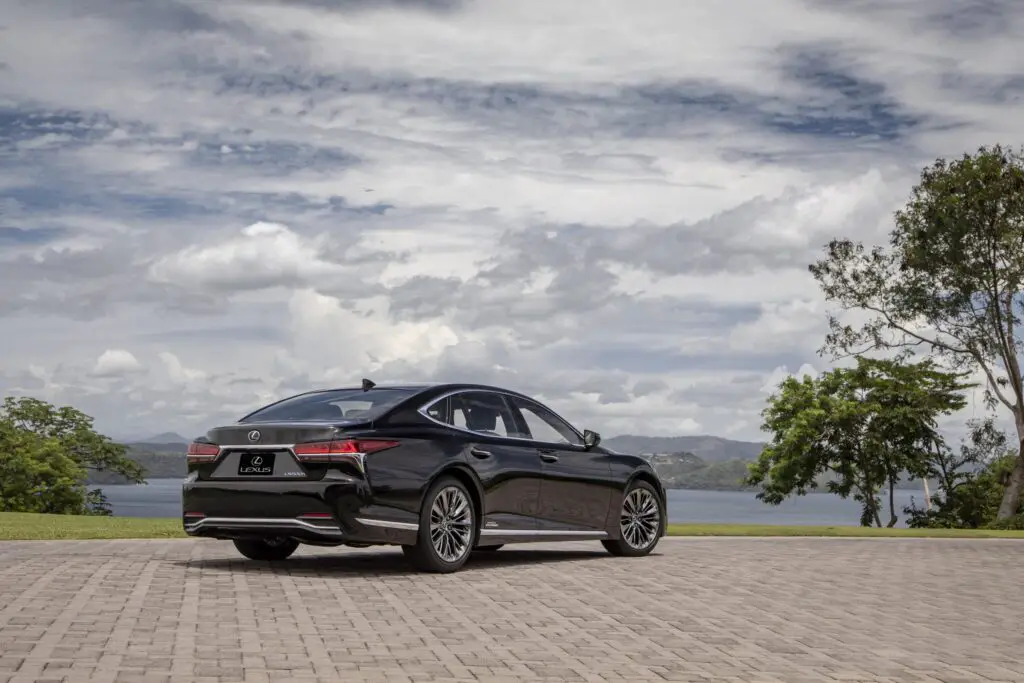
You sort of do a double-take when you see the HUD screen in the 2020 Lexus LS 500h. It starts at one end of the windshield (just below your main line of sight) and extends all the way across about one-third of the distance. In essence, it feels like it’s your primary display as it hovers out in front of the hood of the sedan. Other vehicles use a heads-up display, but you can imagine they just shrug and say: “Okay, Lexus, you win, your HUD is hands-down the best ever.”
One reason is that it looks so colorful and crisp. A HUD is becoming incredibly common these days. I remember seeing one for the first time ever in a Corvette, and back then, it was a wonder because they seem almost magical. In the Lexus LS 500h it’s vibrant and wide, almost futuristic in a way because you can picture having more of these displays to the side of the vehicle, maybe within the cab itself, and possibly stretching further across the windshield. Lexus has perfected the HUD because of how it looks but also because of what you see.
Back in the early days, the HUD was mostly a speed indicator. I’ve seen a few vehicles that have added information like navigation and maybe the current song you’re playing.
Lexus goes much further.
You can use a tachometer if you enjoy spirited driving and want to monitor the RPM level. (The V6 engine in this sedan running at 354 horsepower helps.) I loved seeing navigation pop up with so much clarity and color — big huge green arrows telling you where to drive. Because the car has so many sensors that warn about other vehicles, it’s very cool to see yellow warning lights in the HUD that tell you to brake or that there’s another car coming near you.
Now, the HUD is not actually the primary display. One reason is that the HUD can’t possibly show everything about the car, such as the climate setting or which sensors you have enabled. You don’t want to be adjusting any settings using the HUD. It is meant for quick information and notifications that help you drive with more vigilance and care.
During my testing for a week, I kept it enabled at all times and glanced at the indicators but, in some ways, could easily ignore it as well, looking out in front of me instead. That’s why the HUD impressed me so much because it was also not obnoxious in forcing me to pay attention.
Where could this lead eventually? I think automakers will have to be careful, but for passengers — the game is on! Maybe literally, because I could see a massive HUD for Xbox and PlayStation. On the passenger side, an HUD could show movies or provide access to way more features, all controlled by voice if it is mostly geared for navigation and entertainment.
And, about those safety alerts. I could see more HUD displays to the car’s side and maybe more warnings in the main display if there is an urgent issue. I’d rather see a warning that distracts me and captures my full attention than simple beeps and alerts. Go ahead and startle me and get my attention when a deer runs across the road, please!
Other features of note: The LS 500h is the flagship sedan and a wonder to behold. It’s long, elegant, and elite. The rear seat accouterments are fantastic, including reclining seats, an infotainment system, a smooth ride (thanks to the air suspension), and even a way to adjust the front passenger seat (from the rear seat).
The vehicle has a twin-turbo V6 engine and felt quite sporty for a luxury car that emphasizes style and comfort. The LS 500h has rear cross-traffic alert, pedestrian detection, adaptive cruise control, automatic braking, and a ton of other high-tech enhancements.
I have to give a hat top to Lexus, though, in making this display so vibrant and easy to read. During my test, a rainstorm came out of nowhere, but the HUD looked just as clear even in the fog and haze, and even when the rain started pouring. I’ll be curious to see where Lexus can take the HUD in luxury cars in the near future.

Pretty! This has been an extremely wonderful article. Thank you for supplying this info.